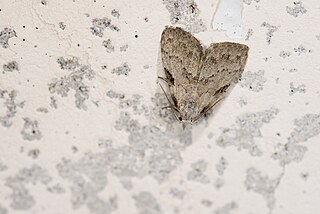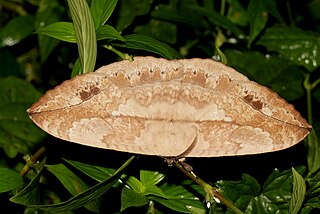
Epermeniidae or the fringe-tufted moths is a family of insects in the lepidopteran order with about 14 genera. Previously they have been divided in two subfamilies Epermeniinae and Ochromolopinae but this is no longer maintained since the last group is probably hierarchically nested within the first. They are presently placed in their own superfamily but have previously been placed among the Yponomeutoidea or Copromorphoidea with which they share some features. Their systematic placement among the apoditrysian group "Obtectomera" is however uncertain. They show some morphological similarities to the "plume moths", for example the wing fringe has similar groups of scales. There are also some similarities to Schreckensteinioidea, for example spiny legs and at least in some species an open-network cocoon. The genus Thambotricha from New Zealand may be the sister group of all other extant members. The most important genera are Epermenia, Ochromolopis and Gnathifera. The group has been extensively revised and catalogued by Dr Reinhard Gaedike.

Manoba is a genus of moths in the family Nolidae. The genus was first described by Francis Walker in 1863.

Acrapex is a genus of moths of the family Noctuidae. It was described by George Hampson in 1894.

Bocula is a genus of moths in the family Erebidae. The genus was erected by Achille Guenée in 1852.

Speiredonia is a genus of moths in the family Erebidae. It was first described by Jacob Hübner in 1823.
Glaucoclystis is a genus of moths in the family Geometridae.
Pomasia is a genus of moths in the family Geometridae.

Sterrhinae is a large subfamily of geometer moths with some 3,000 described species, with more than half belonging to the taxonomically difficult, very diverse genera, Idaea and Scopula. This subfamily was described by Edward Meyrick in 1892. They are the most diverse in the tropics with the number of species decreasing with increasing latitude and elevation.
Glaucoclystis immixtaria is a moth of the family Geometridae described by Francis Walker in 1862. It is known only from Sri Lanka, the Chagos Archipelago, Queensland and Fiji. It could prove to be more widely distributed, with populations in more seasonally dry habitats such as Java and the Lesser Sunda Islands.
Glaucoclystis acygonia is a moth in the family Geometridae first described by Charles Swinhoe in 1895. It is found in the north-eastern Himalayas.
Glaucoclystis expedita is a moth in the family Geometridae. It is found on Peninsular Malaysia.
Glaucoclystis polyclealis is a moth in the family Geometridae described by Francis Walker in 1859. It is found in Sri Lanka and on Borneo, Java and Bali.
Glaucoclystis griseorufa is a moth in the family Geometridae. It is found in the north-eastern Himalayas and on Peninsular Malaysia and Borneo. The habitat consists of lowland forests.
Glaucoclystis sinuosoides is a moth in the family Geometridae. It is found on Borneo. The habitat consists of lowland dipterocarp forests.
Glaucoclystis sinuosa is a moth in the family Geometridae first described by Charles Swinhoe in 1895. It is found in the north-eastern Himalayas.
Gymnoscelis fasciata is a moth in the family Geometridae. It is found in India and on Peninsular Malaysia, Borneo, the Philippines and Sulawesi. The habitat consists of upper montane and dipterocarp forests.
Gymnoscelis exangulata is a moth in the family Geometridae. It is found on Seram, New Guinea and the Solomon Islands.

Eupterote is a genus of moths in the family Eupterotidae. It was first described by Jacob Hübner in 1820.





